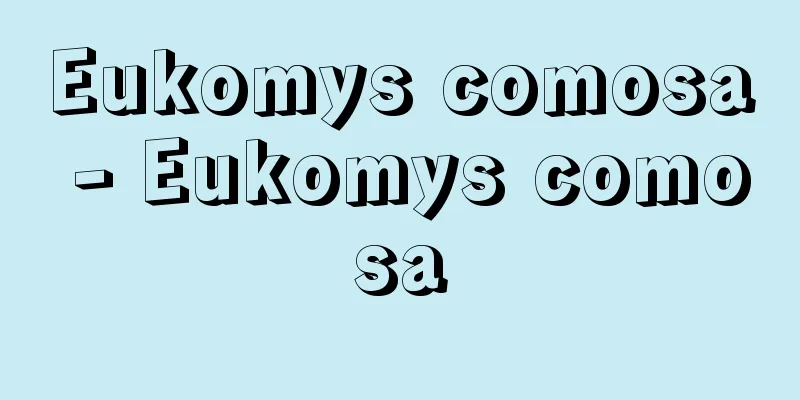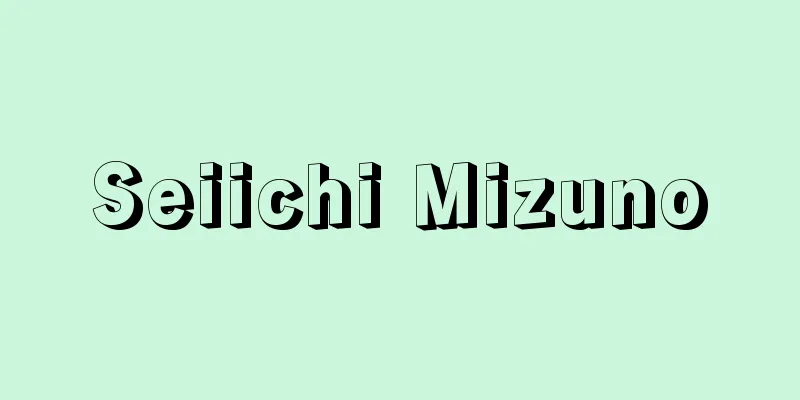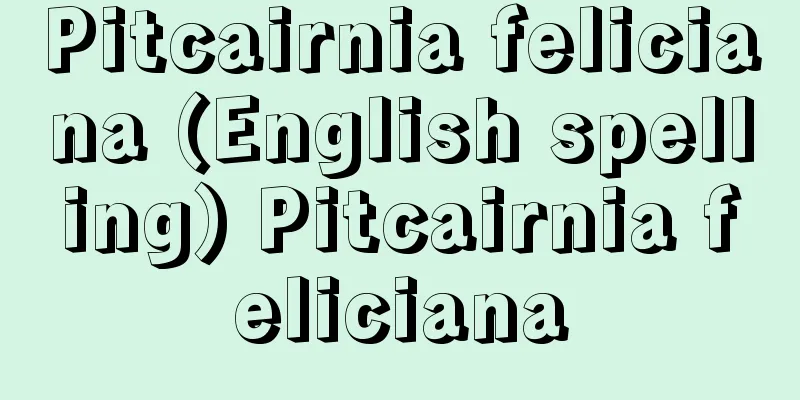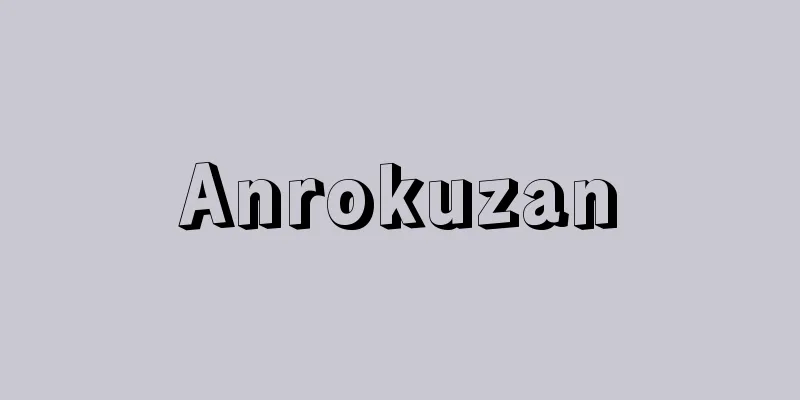Mining - exploitation
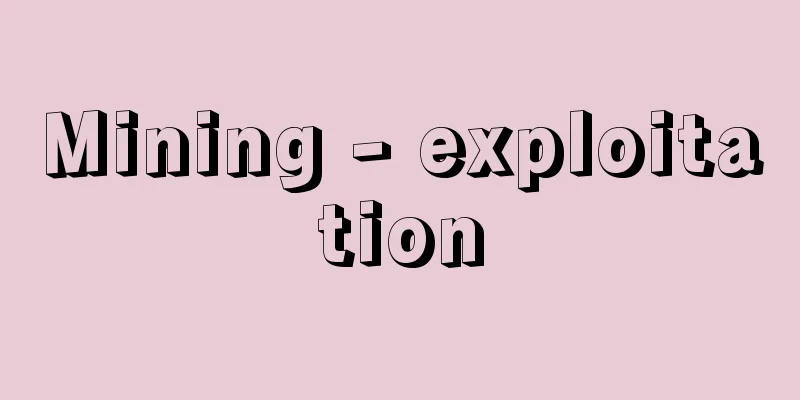
|
In the narrow sense, it means the extraction of minerals from the ground in a mine, but in the broad sense, it means the whole work related to the extraction of minerals in a mine, including all work in a mine. Depending on the type of mineral being extracted, it can also be called coal mining, oil mining, etc., but in these cases, it is usually called coal extraction, oil extraction, etc., and mining usually refers to the extraction of metallic minerals such as gold, silver, copper, iron, etc., and non-metallic minerals such as limestone, silica, feldspar, clay, etc. An aggregate of minerals in the earth's crust that can be economically mined is called an ore deposit, a collection of minerals that can be economically mined within an ore deposit is called ore, a worthless aggregate of minerals within an ore deposit that does not become ore is called gangue, and the surrounding rocks that contain an ore deposit are called host rock. Gangue and host rock that are mixed into ore when it is mined and discarded during the ore-dressing process are called waste rock, "tail" or "slag." Mining ore on the surface is called surface or open-cut mining, while mining inside a mine is called underground or underground mining. Whether open-cut or underground mining, many related tasks are required to mine ore. Open-cut mining requires the removal of the overburden or worthless rock layers covering the deposit, the transportation of the mined ore, drainage, and other safety work, while underground mining requires the opening of the mine entrance, the excavation of tunnels in preparation for mining, the transportation of the mined ore, ventilation to supply fresh air and remove harmful or flammable gases, removal of water that springs up inside the mine, maintenance of the mine to prevent the collapse of tunnels and the mining face, and other safety work. Other major tasks related to mining include prospecting to increase ore reserves inside and outside the mine and to develop appropriate mining plans, removing waste rock from the mined crude ore, aligning the grain size, and, depending on the type of ore, separating it according to the main mineral species contained in it to produce concentrates. In other words, the results of deposit prospecting are related to the selection of mining methods and other mining plans, and changes in the grade of the mined ore or the state of the coexisting minerals can have a significant impact on ore-dressing technology. Since each mine has its own unique circumstances, from geological deposits to environmental conditions, safe and economical mining is not possible unless all of the aforementioned component technologies are rationally planned and implemented in a broad sense of the mining plan. [Nobuo Fusamura] Types and selection of mining methodsIn the narrow sense, the mining method refers to the way the face is set up to extract the ore. Since mining is the most important operation in a mine, deciding which method to use is an extremely important issue. The principles for selecting a mining method are (1) that the work can be done safely, (2) that the mining yield is high, and (3) that it is inexpensive. Since there are many dangerous elements in a mine, especially inside the pit, a mining method that poses as little danger as possible to workers must be selected. Secondly, since mineral resources are limited, it is necessary to extract as much of the ore in the target deposit as possible. Also, since mining is controlled by economics, a method that is as inexpensive as possible is necessary. These three principles are often mutually contradictory, but an appropriate mining method is selected so that the three principles are met as much as possible, taking into consideration the location, extent, depth, size, and shape of the deposit, the type, minerals contained, grade, and physical properties of the ore, the type and physical properties of the parent rock, the difficulty of obtaining pit timber, filling materials, and other necessary materials, labor conditions, and the method of transporting the ore. In many cases, a single mine employs several different mining methods depending on the condition of the deposit. There are also many cases where the mining method has changed over time due to economic circumstances and technological developments. The main underground mining methods are as follows: [1] No-fill mining This is a method of leaving the cavity without filling it. There are several methods: the "jinami-barai" method, which mines between the upper and lower plates while leaving ore pillars here and there in horizontal deposits; the "bundle-and-pillar" method, which mines gently sloping rock layers or massive or layered deposits while leaving ore pillars regularly in a certain size of ore sheet; the "downward mining" method, which mines from the top downward in steeply sloping vein deposits, or the "upward mining" method, which mines from the bottom upward; and the "sublevel stoping" method, which cuts the middle level (called a sublevel) between the upper and lower main transport tunnels in massive deposits or wide veins to create several horizontal pillars, which are then mined in sequence. No-fill mining is inexpensive because no filling or support is required, but it can only be applied to deposits with solid ore and bedrock. In addition, since it may be necessary to leave ore pillars to support the roof, it is not suitable for high-grade ores. [2] Pillar Mining This is a method that uses timber to support the mining face. The most typical method is the square set method, in which timber is used to build a frame to support the roof and side walls while the ore is being mined. The face is often mined uphill, but sometimes it is mined downhill. The square set is left unfilled, but may be filled with waste rock if support strength is required. This method is expensive because it requires a large amount of timber, but it can be mined safely even when the ore or bedrock is prone to collapse. [3] Filling mining This is a mining method in which waste rock and other materials are filled into the mined area. Generally, the filling is done after the ore is extracted, and since mining and filling are repeated alternately, it is also called cut-and-fill mining. Waste rock from the mine can also be used as filler, but in most cases fine tailings (slime), which is waste from the flotation process at the ore-dressing plant, are transported through pipes and used. There are several ways to advance the face, including the upward step method, in which the face is stepped upward, the upward horizontal step method, in which the roof is mined in layers and the same thickness is filled into the footwall and then moved upward in succession, the downward step method, the downward horizontal step method, the diagonal step method, in which the filling surface is inclined, and the cross-cut method, in which the deposit is divided into several horizontal layers and a small cross-sectional area is mined from above or below like a tunnel excavation, and the pit is immediately filled. Although the filling mining method requires time and expense for filling, it is characterized by increasing the recovery rate of the deposit and making the work safer. In addition, waste rock from tunnel excavation can be used as filling material, so there is no need to transport it outside the mine. [4] Shrinkage mining This is a mining method in which part of the mined ore is extracted from below, the remaining ore is stored there, and this is used as a foothold for mining upwards. When the ore in the deposit or the rock in the bedrock is mined, it becomes a lump-like fragment, so its apparent volume increases from when it was in the ground. This percentage is called the increase rate, and can be as much as 30-80% depending on the properties of the ore and rock. The shrinkage method applies this property of ore, and since the crushed ore increases during mining of the upward facing face, the ore is extracted from the ore extraction port of the lower tunnel so that the space between the crushed ore surface and the roof face to be next mined is appropriate. When mining of one section is completed in this way, the ore left in the mining area is extracted from the lower extraction port. The hole may be left unfilled or filled with waste rock. This method is suitable when the deposit has a slope of 60 degrees or more and a regular shape; it is not suitable for ores such as sulfide ores that may spontaneously combust while in storage, but it is inexpensive and easy to extract. [5] Caving mining A method of mining ore by collapsing the roof of the face. When mining underground, if the ore is collapsible, the roof will gradually sink and collapse unless the excavated area is filled or supported. This collapse is called caving, and the caving method is a mining method that takes advantage of this phenomenon. There are several methods for mining, including top slicing, in which the deposit is divided into several slices (horizontal layers), mined from the top layer, and when one slice is finished, an artificial roof material is placed on the deposit at the foot and the roof of the excavated area is allowed to collapse onto it, and then the next slice is mined; sublevel caving, in which the deposit is divided into several slices at sublevels and mined while collapsing the slices; and block caving, in which the deposit is divided into large sections, the lower part is mined using a method called undermining, and the ore body is allowed to collapse. These methods are suitable when the deposits are large and the ore is collapsible and of low quality, and are characterized by the fact that they can be operated on a large scale without requiring much expense. [6] Mining methods that do not involve the extraction of ores The method of recovering useful metal components by chemically dissolving them from ores using appropriate chemicals is called leaching. The chemicals used are called leachate, and the liquid containing the useful metal components is called pregnant solution. The method of recovering pregnant solution by applying leaching to residual ore or low-grade ore deposits in the mine is called impress leaching. The method of using special bacteria to increase the recovery efficiency is called bacterial leaching. When the mine water in a copper mine contains a large amount of copper ions, adding iron scraps to it will replace the copper ions with iron ions, and the precipitated copper will be recovered. Another method is to drill from the outside of the mine to the ore deposit, and send water or hot water through this to dissolve or crush the ore and recover the copper. Open-cut mining includes natural ground mining methods such as slope mining, glory hole mining, and step mining, and placer mining methods such as hydraulic mining and dredging. Compared to underground mining, open-cut mining is only economically viable when the deposit is closer to the surface and the stripping ratio, which is the ratio of the overburden that must be removed to prepare the face to the ore that can be mined, is small. Generally, open-cut mining is cheaper than underground mining, has a higher recovery rate, and is safer, but in Japan, due to the geological structure, large-scale open-cut mining is limited to non-metallic minerals such as limestone. Overseas, metal minerals such as iron, copper, lead, and zinc, and fuel minerals such as coal and lignite are often mined by large-scale open-cut mining. [Nobuo Fusamura] Drilling MethodIn order to extract ore from an ore deposit, no matter what mining method is used to prepare the face, the ore must be excavated from the deposit. This technique is called the excavation method, and various excavation methods are used depending on the nature of the ore, its state of existence, the nature of the parent rock, and the scale of the mining volume. [1] Blasting method This is a method of drilling the necessary number of blasting holes 1.5 to 2 meters deep in the face to be excavated with a rock drill, loading them with explosives, and blasting them to explode the ore. The blasting technique requires adjusting the depth, direction, arrangement of the blasting holes, the amount of explosives charged, and the order of detonation to minimize the amount of explosives required for blasting and to blast the ore into a size that is easy to handle. Some mines determine blasting standards or blasting plans in advance according to the face conditions, and blasting holes are set up and the specified blasting is carried out according to these. The characteristic of the blasting method is that the face work is cyclical. For example, drilling - loading explosives - blasting - loading and transporting the blasted ore and related work are considered as one cycle, and it is planned to complete one cycle at least in one working hour (normally about 6 hours of actual work). In general metal and non-metal mines, whether underground or open-cut, ore is excavated by blasting. In some cases, instead of explosives, expansive chemicals or the expansive force of high-pressure gas are used to excavate blast holes. [2] Mechanical Excavation Soft ores and rocks that do not require blasting can be excavated with excavation machines. Machines capable of continuous excavation include continuous miners and roadheaders, which are used in coal mines to mine coal in a room-and-pillar manner by tunneling along the seam, and drum cutters and hobs, which are used in longwall mining to cut the coal seam along the face. These are primarily used in coal mines, but can also be used in mines that mine soft sedimentary layers, depending on the mining method. Dredges used to excavate placer ores (gold dust, tin dust, iron sand, etc.) are also a type of continuous excavation machine. Intermittent excavation machines include power shovels and backhoes. Power shovels in particular are widely used in open-cut mining to excavate coal, lignite, iron ore, copper ore, apatite, etc., and to strip the topsoil, and this method is also called power shovel mining. [3] Hydraulic Excavation Method Hydraulic excavation can be performed by injecting high-pressure water of 30 to 100 atmospheres from a hydraulic monitor (injector) in placer deposits, open-cut overburden, and coal mining. In Japan, hydraulic mining has been carried out efficiently in coal mines in Hokkaido. In addition, when water is compressed to over 3,000 atmospheres and injected, it is possible to cut and crush even hard rocks, and it is expected that this method will be put to practical use in the near future. [4] Excavation using hand-held tools When excavating soft ore bodies on a small-to-medium scale, hand-held tools such as pickaxes, shovels, pick hammers, and breakers may be used. While pickaxes and shovels are entirely manual, pick hammers and breakers are tools that use the impact force of compressed air, and according to experienced operators, they are quite efficient. [Nobuo Fusamura] Face transportation methodWhen ore is excavated at the mining face, there are many methods for moving the crushed ore from the mining face to the main transportation route. One of the following transportation methods is selected depending on the type of ore, mining method, excavation method, and scale of mining. [1] Direct transport method: In this method, as soon as mining machinery excavates the ore from the ore body at the mining face, the ore is immediately loaded onto a transporter such as a conveyor or shuttle car and transported. Mechanical excavation methods such as continuous miners are combined with shuttle cars, while drum cutters and hovers are combined with conveyors to transport the ore to the face. In hydraulic excavation, hydraulically crushed ore is transported together with the water in a pipe or waterway. When excavating ore or overburden using a power shovel in open-cut mining, the ore or overburden is loaded directly onto a mine car or transport vehicle. Power shovels are also used to load ore crushed by blasting. [2] Indirect transportation method: Ore crushed by blasting or the self-destructive action of caving is loaded onto ore cars, transport vehicles, conveyors, etc. by a loader, or the ore is scraped up and dropped into the mine by a scraper, or the ore is transported to a transport vehicle or mine by a loading transporter called a scooptram or LHD. Loaders can be classified into two types of loading methods: scraping and scooping, and can run on rails or on wheels or caterpillars on the mine surface. A scraper is a type of scraping device that uses a wire rope and is remotely controlled by a winch. Loading transporters such as scooptrams are larger loaders with a scooping bucket volume of 2 to 10 cubic meters, and can load ore and transport it to distant locations. [3] Special method In shrinkage mining, when the ore on the roof of the face is excavated, a portion of the ore is extracted through a chute at the bottom, and the rest is left in the mine, so no transportation from the face is performed. In the upward or downward no-fill mining method and sublevel mining method, all the ore excavated at the face falls to the bottom, is extracted through a chute at the bottom, and is loaded onto ore cars, transport vehicles, etc. In traditional mines, rails were laid from the main tunnel to the terminal tunnel, and ore cars were transported by locomotives or winches. Recently, many mines have moved away from rails and use self-propelled diesel engines for excavation machines and loading transporters at the face, and belt conveyors or diesel vehicles to transport ore from inside the mine to outside. This method is called trackless mining (a mining method that does not require tracks), and is considered to be a safe and economical mining method. [Nobuo Fusamura] [References] | | | | |Blazing|Source: Shogakukan Encyclopedia Nipponica About Encyclopedia Nipponica Information | Legend |
|
狭義では鉱山で地中にある鉱物を採掘することをいうが、広義では鉱山の鉱石採掘に関する作業全体をいい、鉱山におけるすべての作業を含む。採掘の対象鉱種に応じて石炭採鉱、石油採鉱などともいうが、これらの場合、通常は採炭、採油などといい、採鉱とは通常は金属鉱物、たとえば金、銀、銅、鉄など、および非金属鉱物、たとえば石灰石、珪石(けいせき)、長石、粘土などを採掘することをいう。 地殻中の鉱物の集合体で経済的に採掘できるものを鉱床といい、鉱床の中で経済的に採掘できる鉱物の集まりを鉱石、鉱床の中で鉱石とならない無価値の鉱物集合体を脈石(みゃくせき)、鉱床を含む周囲の岩石を母岩という。鉱石を採掘したときこれに混入し、選鉱過程で廃棄される脈石や母岩を廃石または「ずり」あるいは「ぼた」という。地表で鉱石を採掘することを坑外採掘または露天掘り、坑内で採掘することを坑内採掘または坑内掘りという。露天掘りでも坑内掘りでも鉱石を採掘するためには関連する多くの作業が必要である。露天掘りでは、鉱床を覆う表土または価値のない岩石層の剥土(はくど)、採掘した鉱石の運搬、排水その他の保安作業が必要であり、坑内掘りでは、坑口設定の開坑作業、採鉱準備のための坑道掘進、採掘した鉱石の運搬、新鮮な空気の供給および有害性または可燃性のガスの排除を図る通気、坑内で湧(わ)き出す水の排除、坑道や採鉱切羽(きりは)の崩落を防ぐ保坑その他の保安作業が必要である。このほか、坑内外で埋蔵鉱量を増やし適切な採鉱計画をたてるための探鉱、採掘した粗鉱から廃石を除き、粒度をそろえ、鉱石の種類によっては主要含有鉱種に従って分離して精鉱とする選鉱なども鉱山の主要作業として採鉱作業に関係している。すなわち鉱床探査の結果は採鉱方法の選定その他の採鉱計画を定めるのに関係し、採掘した鉱石の品位、共存鉱物の状態などが変化すれば選鉱技術にも大きな影響を及ぼすことがある。鉱山事情は地質鉱床から環境条件まで鉱山ごとに特異性があるので、広義の採鉱計画では前述の各要素技術のすべてが合理的に計画され実施されなければ、安全で経済的な鉱石の採掘はできない。 [房村信雄] 採鉱法の種類と選定狭義の採鉱法とは鉱石を採掘する切羽の設け方をいう。採鉱作業は鉱山のもっとも主要な作業であるから、どのような方法で採鉱するかを決定することはきわめて重要な問題である。採鉱法選定の原則は、(1)作業が安全にできること、(2)採鉱実収率が高いこと、(3)経費がかからないこと、の三つである。鉱山とくに坑内では危険要素が多いので、労働者に対してできるだけ危険のおそれがない採鉱法を選定しなければならない。次に鉱物資源には限りがあるので、対象とする鉱床の鉱石をできるだけ余すところなく採掘する必要がある。また鉱業は経済の支配を受けているので、できるだけ費用が安くなるような方法が必要である。これらの3原則は互いに矛盾する場合が多いが、3原則ができるだけ満たされるように、鉱床の位置・範囲・深さ・大きさ・形状、鉱石の種類・含有鉱物・品位・物性、母岩の岩種・物性、坑木、充填(じゅうてん)材料、その他の必要材料の入手の難易、労務事情、鉱石運搬方法などを考慮して適切な採鉱法を選定する。一つの鉱山でも鉱床の状態によっていくつかの異なった採鉱法を採用している例が多い。また経済事情や技術の発達によって採鉱法がしだいに変遷している例も少なくない。おもな坑内採鉱法をあげれば次のとおりである。 〔1〕無充填採鉱法 採掘跡に充填しないで空洞のままにしておく方法で、水平な鉱床で所々に鉱柱を残しながら上下盤の間を採鉱する方法を地並払(じなみばらい)、緩傾斜の岩層または塊状、層状の鉱床で、一定の大きさの鉱画の中に規則的に鉱柱を残して採鉱する柱房式、傾斜が急な脈状鉱床で上部から下方へ掘り進む下向き採鉱法、または下方から上方へ掘り進む上向き採鉱法、塊状鉱床または幅の広い鉱脈で上下の主要運搬坑道の間を中段(サブレベルという)で切っていくつかの水平鉱柱をつくり、これを順次採鉱していくサブレベルストーピング(サブレベル採鉱法)などがある。無充填採鉱は充填や支保を行わないので経費がかからないが、鉱石および岩盤が堅固な鉱床でなければ適用できない。また、天盤を支えるために鉱柱を残さなければならないことがあるので、品位の高い鉱石には適さない。 〔2〕支柱採鉱法 採鉱切羽の支持に坑木を用いる方法で、鉱石を採掘するとともに坑木で枠を組んで天盤や側壁を支えるスクエアセット法が代表的である。切羽の進め方は多くの場合、上向き採鉱法であるが、下向き採鉱法による場合もある。またスクエアセットの中は無充填とするが、支持強度が必要な場合などには中に廃石を充填することもある。この方法は坑木を多量に必要とするので経費がかかるが、鉱石や岩盤が崩壊しやすい場合でも安全に採掘できる。 〔3〕充填式採鉱法 採掘跡に廃石などを充填する採鉱法で、一般に鉱石の採掘に引き続いて充填を行い、採掘と充填とが交互に繰り返されるのでカット・アンド・フィル採鉱法ともよばれる。充填材には、坑内から出る廃石も用いられるが、選鉱場の浮遊選鉱の廃棄物である微細な尾鉱(スライムslime)をパイプで流送して用いる場合が多い。切羽の進め方には、上向きで切羽面が階段状になる上向き階段法、天盤を層状に採掘し、その厚さだけ下盤側に充填し順次上方に向かう上向き水平段欠(だんかき)法、同様に下向きに進む下向き階段法、下向き水平段欠法、充填面が傾斜をなす斜(ななめ)段欠法、鉱床をいくつかの水平層に分け上方または下方から坑道掘進のように小さい断面積で採掘し、その跡をただちに充填するクロスカット法などがある。充填採鉱法は充填のための経費と時間を要するが、鉱床の実収率を高め作業の安全性が高いのが特徴である。また坑道掘進などで出る廃石を充填材として使用し坑外へ搬出しないですむ。 〔4〕シュリンケージ採鉱法 採掘した鉱石の一部を下から抜き取り、残りの鉱石をそこにためておき、これを足場として上向きに採掘していく採鉱法である。鉱床中の鉱石や岩盤中の岩石が採掘されると塊状の破片となるので地山(じやま)中にあったときよりも見かけの容積が増大する。その割合を増積率といい、鉱石や岩石の性質に応じて30~80%にも及ぶ。シュリンケージshrinkage法は鉱石のこのような性質を応用したもので、上向きの切羽面の採掘で破砕された鉱石は増積するので、破砕鉱石面と次の採掘すべき天盤切羽面との間の空間が適当になるように、下部坑道の鉱石抜き取り口から鉱石を抜き取る。このようにして1区画の採掘が終わると、採掘跡に残しておいた鉱石は下部抜き取り口から抜き取る。その跡は無充填のままのこともあり、廃石で充填することもある。この方法は、鉱床の傾斜が60度以上で形が規則正しい場合に適し、硫化鉱など貯鉱中に自然発火するおそれがある鉱石には適さないが、経費を要せず採掘しやすい。 〔5〕ケービング採鉱法 切羽の天盤を崩落させて鉱石を採掘する方法。坑内掘りで鉱石の性質が崩壊性のときは採掘跡に充填や支保を施しておかなければ、その天盤はしだいに沈降して崩落する。この崩落をケービングcavingといい、この現象を利用して採掘する方法がケービング法である。これには、鉱床をいくつかのスライスslice(水平層)に分け、その上層から採掘し、一つのスライスが採掘し終わると足元の鉱床上に人工天盤材料を設けて採掘跡の天盤をその上に崩落させ、ついでその次のスライスを採掘していくトップスライシング法、鉱床をサブレベルでいくつかのスライスに分け、スライスを崩落させながら採掘するサブレベルケービング法、鉱床を大きな区画に分け、その下部を下透(したすか)しとよばれる掘り方で採掘し、その鉱体を崩落させるブロックケービング法などがある。これらの方法は、鉱床が大きく鉱石が崩壊性で品位があまり高くない場合に適し、経費をあまり要さず大規模な操業ができるのが特徴である。 〔6〕鉱石を採掘しない採鉱法 適当な薬液を用いて鉱石から有用金属成分を化学的に溶かして回収する方法をリーチング法といい、使用する薬液を浸出液、有用金属成分を含む液を貴液という。坑内の採掘跡の残鉱や低品位の鉱床に浸出液を流し込んでリーチング法を応用して貴液を回収する方法をインプレスリーチング法という。その回収効率を高めるため特殊の細菌を使用する方法はバクテリアリーチング法とよばれている。銅鉱山の坑内水に多量の銅イオンが含まれているとき、これに鉄くずを入れると銅イオンと鉄イオンとが置換して沈殿銅が回収される。坑外から鉱床までボーリングを行い、これを通して水または高温水を送り鉱石を溶解または破砕して回収する方法もある。 露天掘りには、傾斜面採鉱法、グローリーホール法、階段採鉱法などの地山採鉱法と、水力採鉱法、浚渫(しゅんせつ)法などの砂鉱採鉱法とがある。坑内掘りの場合に比して鉱床が地表近くにあり、切羽準備のため除去しなければならない表土と採鉱できる鉱石の割合である剥土(はくど)比が小さい場合にのみ経済的に採用できる。一般に露天掘りは坑内掘りに比して採鉱費が安く、実収率が高くかつ安全性がよいが、日本では地質構造の関係で大規模な露天掘りができるのは石灰石のような非金属鉱物に限られている。海外では鉄、銅、鉛、亜鉛などの金属鉱物、石炭、褐炭などの燃料鉱物も大規模な露天掘りで採掘されている例が多い。 [房村信雄] 掘削法鉱床から鉱石を採掘するには、どのような採鉱法で切羽づくりをしても、鉱床から鉱石を掘り出さなければならない。この技術を掘削法といい、鉱石の性質、存在状態、母岩の性質、採鉱量の規模などに応じて種々の掘削法が行われている。 〔1〕発破法 掘削すべき切羽面に深さ1.5~2メートルの発破孔を削岩機で必要な数だけ削孔し、爆薬を装填(そうてん)して発破し、鉱石を爆砕する方法である。発破孔の深さ、方向、配列方法、爆薬の装薬量、起爆の順序などを調整して、爆砕に必要な爆薬量をなるべく少なくし、かつ鉱石が取り扱いやすい手ごろな大きさに爆砕されるように発破することが発破技術の要件である。鉱山によっては切羽事情に応じた発破規格または発破計画をあらかじめ定めておき、これに従って発破孔を設け所定の発破を行うようにしている。発破法の特徴は切羽作業がサイクル化することである。たとえば、削孔―爆薬の装填―発破―爆砕鉱石の積み込み、運搬とこれらの付帯作業、を一つのサイクルとし、少なくとも1作業時間(通常の実働時間は6時間前後)に1サイクルを済ますように計画されている。一般の金属、非金属鉱山では坑内掘りでも露天掘りでも、鉱石の掘削はほとんど発破法によっている。発破孔に対して爆薬のかわりに膨張性化学薬品、あるいは高圧ガスの膨張力を利用して発破にかえる方法も行われた。 〔2〕機械的掘削法 発破を必要としない軟質の鉱石や岩石は掘削機械で掘削することができる。連続的掘削ができる機械には、炭鉱で沿層掘進法によって柱房式採炭を行うコンティニアスマイナーやロードヘッダーなど、長壁式採炭で切羽面に沿って炭層を切削するドラムカッター、ホーベルなどがある。これらは主として炭鉱用であるが、軟質の堆積(たいせき)層などを採掘する鉱山では採鉱法によっては使用できる。砂鉱(砂金、砂錫(さすず)、砂鉄など)を掘削する浚渫(しゅんせつ)船も連続的掘削機械の一種である。断続的掘削機械にはパワーショベル、バックホウなどがある。とくにパワーショベルは露天掘りで石炭、褐炭、鉄鉱石、銅鉱石、リン灰石などの掘削および表土の剥土に広く用いられ、パワーショベル採鉱法ともよばれている。 〔3〕水力掘削法 堆積砂鉱鉱床、露天掘りの表土、石炭採掘などで30~100気圧の高圧水を水力モニター(噴射機)から噴射して掘削することができる。日本では北海道の炭鉱で水力採炭を効率よく実施していた例がある。また、水を3000気圧以上に圧縮して噴射すると、硬い岩石でも切削、破砕することができ、近い将来その実用化が期待されている。 〔4〕手持ち工具による掘削法 軟質鉱体を中小規模で掘削する場合には、つるはし、ショベル、ピックハンマー、ブレーカーなどの手持ち工具を用いることがある。つるはしやショベルはまったくの人力によるが、ピックハンマーやブレーカーは圧縮空気による衝撃力を利用する工具であり、熟練者によればかなり効率も高い。 [房村信雄] 切羽運搬法切羽で鉱石を掘削したとき、これら破砕された鉱石を切羽から主要運搬経路に移す方法にも多くの種類があり、鉱石の種類、採鉱法、掘削法、採掘規模などによって次のような運搬法のいずれかが選定される。 〔1〕直接運搬法 採鉱切羽で採掘機械が鉱体から鉱石を掘削するそばからただちにコンベヤーないしシャトルカーなどの運搬機に積み込まれて運搬される方法である。機械的掘削法のコンティニアスマイナーはシャトルカーと組み合わせ、ドラムカッター、ホーベルなどはコンベヤーと組み合わせて切羽運搬を行う。水力掘削法では水圧破砕した鉱石をその水とともにパイプまたは水路で流体輸送する。露天掘りでパワーショベルを用いて鉱石または表土を掘削するときは、鉱石または表土を直接鉱車または運搬車両に積み込む。パワーショベルは発破で破砕した鉱石の積み込みに用いられることもある。 〔2〕間接運搬法 発破またはケービングの自壊作用で破砕された鉱石をローダー(積込み機)で鉱車、運搬車両、コンベヤーなどに積み込むか、スクレーパーで鉱石をかき寄せて坑井へ落とすか、スクープトラム、LHDなどとよばれる積込み運搬機で鉱石を運搬車両または坑井まで運搬するなどの方法がある。ローダーは積込み方法にかき寄せ式と掬(すくい)込み式があり、走行方法にレール上を走るものと車輪またはキャタピラーで坑道面を走るものとがある。スクレーパーは一種のかき寄せ装置でワイヤロープを用いウィンチで遠隔操作する。スクープトラムなどの積込み運搬機はローダーを大型化し、掬込みバケットの容積も2~10立方メートルに及び、鉱石を積み込んで離れた地点まで運搬することができる。 〔3〕特殊法 シュリンケージ採鉱法では切羽天盤の鉱石が掘削されると、その量の一部に相当する鉱石を下部のシュートchute(漏斗(ろうと)口)から引き出し、残りは採掘場内に残しておくので切羽運搬は行われない。上向きまたは下向きの無充填採鉱法、サブレベル採鉱法なども切羽面で掘削された鉱石はすべて下へ落ち、下部のシュートから引き出されて鉱車、運搬車両などに積み込まれる。 従来の鉱山では、主要坑道から末端の坑道までレールを敷設して、機関車ないし巻上げ機などで鉱車運搬を行っていた。最近はレールを敷設せず、切羽の掘削機械や積込み運搬機はディーゼルエンジンによる自走式としたものを用い、坑内から坑外への鉱石運搬にはベルトコンベヤーまたはディーゼル車両とする鉱山が多くなっている。このような方法をトラックレス採鉱法trackless mining(軌道を必要としない採掘方式の意)といい、安全性が高く経済性がよい採鉱法であるとされている。 [房村信雄] [参照項目] | | | | | |出典 小学館 日本大百科全書(ニッポニカ)日本大百科全書(ニッポニカ)について 情報 | 凡例 |
>>: Daylighting - Best (English)
Recommend
United Airlines [company] - United Airlines
Abbreviation: UAL. The world's second largest ...
Turkey - Turkey
A bird of the Phasianidae family in the order Gall...
Krasnyi internatsional profsoyuzov (English transcription) Krasnyi internatsional profsoyuzov
…the abbreviation for the Red Trade Union Interna...
Pursuit collateral - Tsuidattampo
This refers to the seller's liability to guar...
Kusuha Pass - Kusuha Pass
In the Middle Ages, this checkpoint was located on...
Insectivores - Insectivores
A general term for animals belonging to the order...
Sunrise - Gorakko
〘Noun〙 ("Go" is a prefix) ① The sunrise ...
Cha Jing (English: Cha-jing)
The oldest book on tea from the Tang Dynasty in Ch...
Jack the Ripper
The perpetrator of a series of murders that took p...
cohesive failure
… An adhesive is a substance that is placed betwe...
Financial oligarchy
... "The accumulation of production, the mon...
Virūpākṣa (English spelling)
…Caves 13-29 and the more than 20 unnumbered cave...
Takahashi Shell Mound
A shell mound from the Early Yayoi period in Takah...
Evershed, J.
...From this perspective, it can be said that the...
Large group - Ogumi
...This is what is known as "junkumi," ...
